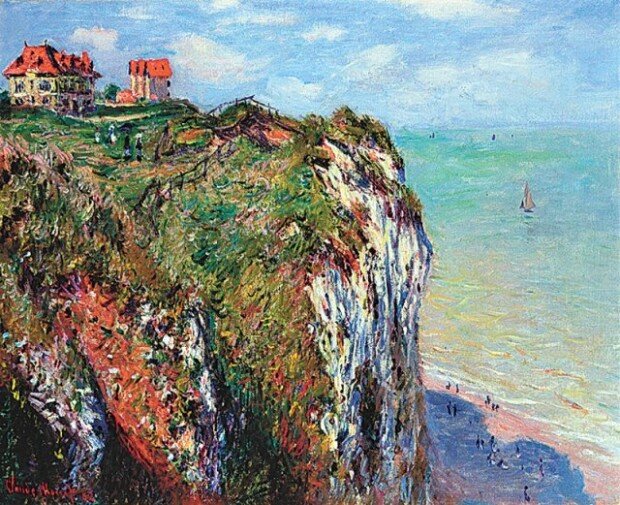Solution in nature
Solution in nature
Posted July. 07, 2022 08:10,
Updated July. 07, 2022 08:10

In life, people face cliffs at times. Some people keep their ground, while others set off to find adventures to look for solutions. Claude Monet was the latter. He sought peace in travels when faced with struggles. He loved the beaches of Normandy and visited them throughout his life.
This landscape, created at Monet's age of 42, depicts Dieppe of Normandy, a beautiful seaside village located north of Le Havre, where he spent his childhood. With colorful paint and brush touches, the giant cliffs are breathtaking.
Monet had been in a tough situation at that time. His wife Camille passed away in 1879, leaving behind two sons, and he was unable to pay his rent. His patron, Ernest Hoschedé, went bankrupt, so his wife Alice and six children had to stay at Monet's place.
He grew to love Alice and was criticized by others. He must have felt driven to the brink - he had eight children to look after but unable to work. Eventually he took his art supplies and left. He felt at ease when he returned to the nature he loved. The beaches of Normandy gave him artistic inspiration as well as inner peace. Monet believed that light was color, and he quickly transferred the colors that transformed by light onto his canvas. Paintings that showed the splendor and diversity of the world of colors were born. Monet opened exhibitions on these landscapes, which began to gain fame. He and his family moved to Giverny in the following year, where he created his own gardens.
Cliffs are used as metaphors to describe difficult situations, where you are unable to see what comes next. Monet visited the beaches of Normandy when he was in despair. He was able to get artistic inspiration as well as the answers to his own questions. This was possible because he sought after the light of nature, instead of materialistic values.




![[단독]통일교 ‘한학자 보고문건’에 ‘전재수’ 최소 7번 등장](https://dimg.donga.com/c/138/175/90/1/wps/NEWS/IMAGE/2025/12/22/133015670.1.jpg)


